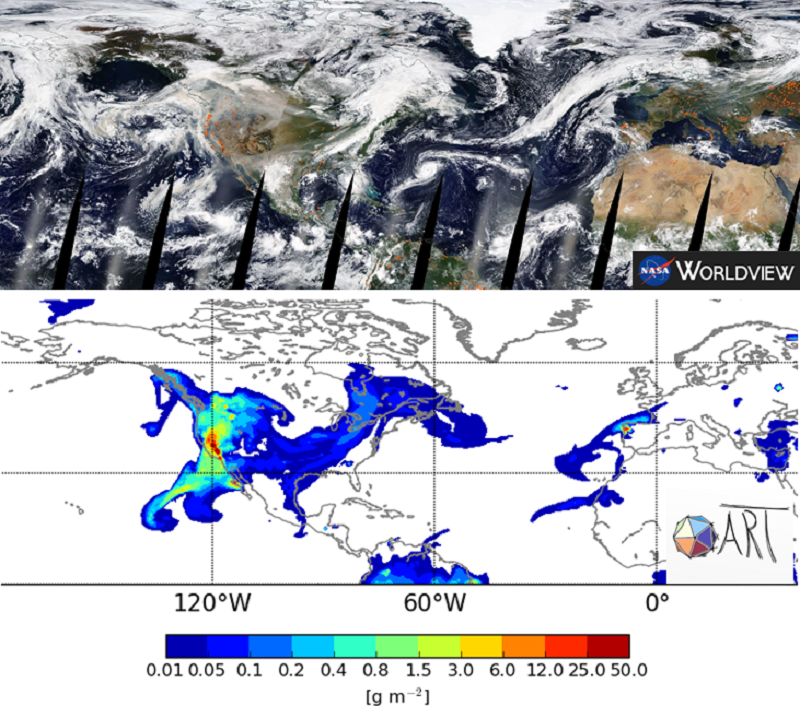September 2020 - Not only in California the vegetation burned
In early September, the forest fires on the American West Coast made headlines in the media. In California, there have been more than 8000 fires since August 15, 2020, burning more than 1.3 million hectares of land. In addition to the direct dangers of the flames, which threaten lives and buildings, the emission of gases and particles released by the combustion also plays an important role for health and atmospheric processes. At times, California had the worst air quality in the world over a large area. However, the high loading of the air with forest fire aerosol also leads to a reduction of the radiation reaching the ground, the energy yield of solar plants. There is therefore a great public interest in predicting these situations.
The working group "Trace Substance Modelling and Climate Processes" is also concerned with the emissions of vegetation fires. With the model system ICON-ART, it allows to simulate forest fire emissions and their spread in real time. The emission calculations are based on satellite data, which detect the fires and estimate the energy released that influences the local ascent of the emissions into higher atmospheric layers.
The soot particles released by the Californian forest fires are clearly visible on satellite images and their transport can be observed over days. A global simulation was performed with ICON-ART from September 8 to 14. The figure shows the vertically integrated column content of soot particles. It also shows that Central Europe was influenced by aerosols originating from vegetation fires in Portugal. How these influenced the solar power production over Germany is being investigated with our project partners DWD and Meteocontrol in the PermaStrom project.
Contact person: Lisa Muth, Bernhard Vogel
The figure shows a satellite image from 14.08.2020 (top) and the horizontal distribution of the vertically integrated aerosol mass per m2 simulated with ICON-ART (bottom).

